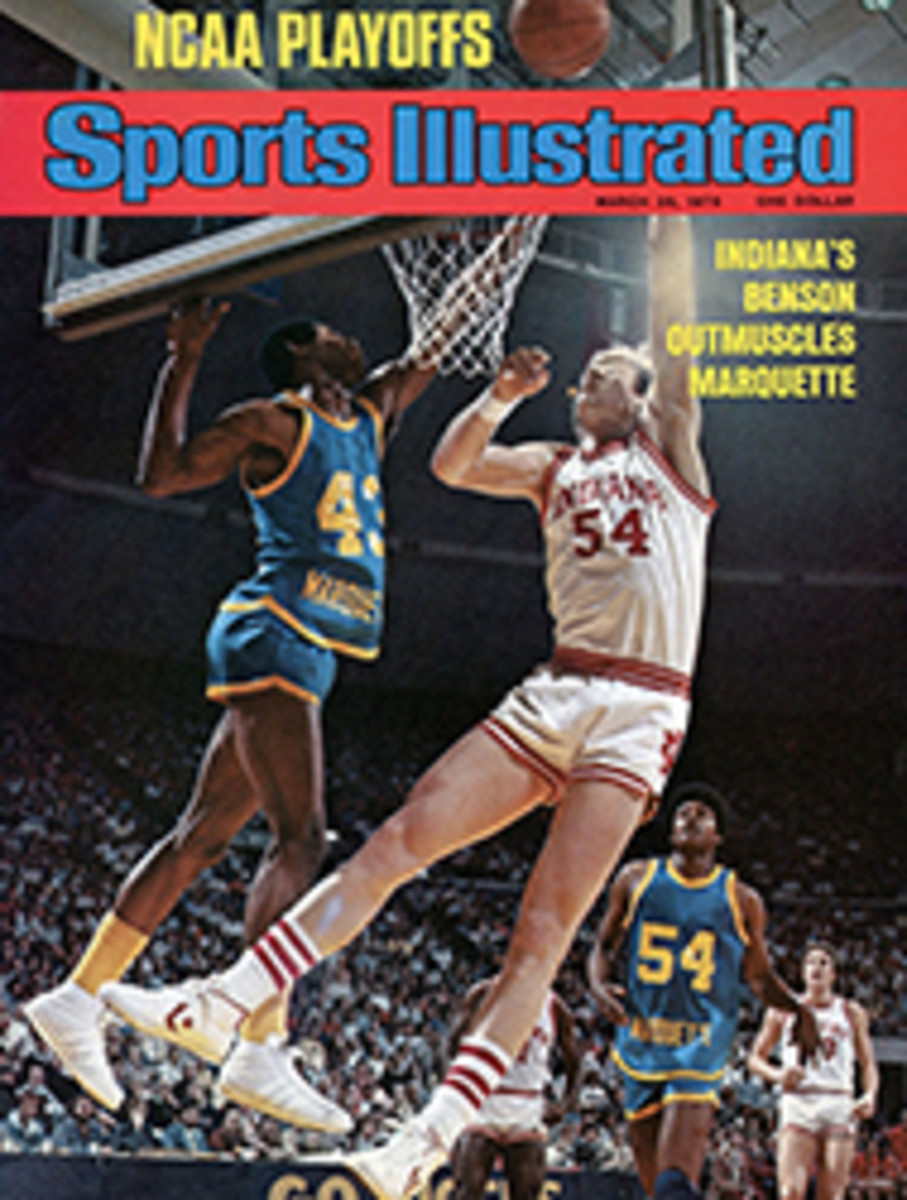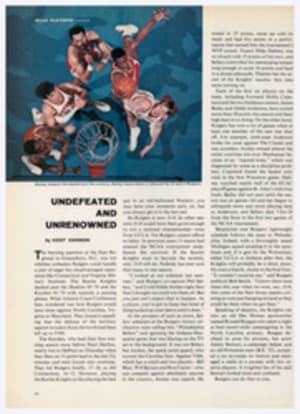
A Kingdom For My Horse
Complete with mirrors and fountains, statues and chandeliers, the dazzling Winter Place Farm in Salisbury, Md. sprang practically full grown from the pocketbook of James Bradley Caine in 1972. This year, for the first time, tourists will be welcome to the farm and the museum Caine built for his collection of superb antique carriages. He has even provided some amenities for people, but you are probably still going to have a better time there if you are a horse.
I don't know what it means. It's just one of Mr. Caine's whims," said the guide, looking at what appeared to be a small graveyard—three rows of stone crosses, too close together to mark people or horses, too many to mark stable pets at a farm only four years old.
Another of the whims of James Bradley Caine is Winter Place Farm itself, a lavish facility for the housing and schooling of show horses, near Salisbury on Maryland's Eastern Shore. Caine is a land developer who made the bulk of his fortune in Ocean City real estate, and now seems to be trying to blow it all on hunters and jumpers. He decided to build Winter Place in January of 1972. Three months later the main barn was finished.
With its metal siding and moderately pitched roof, the barn looks modern and functional. It is surrounded by a maze of well-kept paddock fences and half a dozen tidy outbuildings. The only thing that might cause a passerby to apply the brakes would be a glimpse, through the huge window at the south end, of three enormous chandeliers.
There are chandeliers everywhere at Winter Place, big ones and little ones. The barn also is decorated with dozens of carriage lamps, clumps of artificial shrubs and flowers, fountains with plaster nymphs atop and a Persian rug on the tack room floor. But beneath all the gilding is a lily of a horse barn. Rows of stalls, 35 in all, paneled in knotty pine and marked with carriage lamps, line either side of the riding ring. The stalls are equipped with water buckets that refill themselves automatically, feed drawers built into the doors and battery-powered fly catchers. The floors of the passageways are covered with an acre of Tartan all-weather track material designed to eliminate noise, dust and slippery spots.
The riding ring, 225 by 175 feet, is almost twice the size of Madison Square Garden's arena. Up in the rafters, beyond the chandeliers, is a battery of mercury lamps that spare the horses glare and shadows, and a sprinkler system for settling the dust. There are rooms for laundry, tack, feed and trophies, and a trainer's office that looks out onto the ring through a glass partition. There are wash stalls with vacuum hoses and heat lamps, and two whirlpool baths 3½ feet deep that can be heated to 100° with underwater jets capable of pressures of up to 80 pounds. A horse being treated for, say, a blownup leg, can stand in the midst of this therapeutic maelstrom and amuse himself looking into horse-level mirrors. Having created his equine Xanadu, Caine, with advice from his young trainer Ronnie Beard, began filling it with the best hunters and jumpers that seemingly unlimited amounts of money could buy, some of them well-known older horses such as Perfect Stranger, the AHSA's Grand Champion hunter for 1971, and Old Dominion, a top conformation hunter.
"We bought 'made' horses at first," says Beard. "We needed them to build the reputation of the farm."
Good horses attracted good riders. By the end of 1972, its first year of showing, Winter Place had won more than 100 blue ribbons in Class A shows and 30 championships and reserve championships. The impact on the horse show world was stunning. "It was a whole new concept," Beard says. "Mr. Caine was one of the first to go out and pay high prices for very good jumpers, as the Europeans do."
Not everyone was delighted. People in the horse show business rarely celebrate each other's good fortune. "It's a hard world to break into, like society, I guess," says Beard, "and Winter Place rose very quickly from no stable to one of the best in the country."
Meanwhile, Caine, the reclusive developer, continued to develop Winter Place. He built a quarter-mile asphalt Go-Karttrack for his son and a stone shop building for his blacksmith. He acquired antique wagons and carriages at a record pace, shipped them off to be restored, then constructed a museum nearly as large as the main barn to house them. He put in an equine swimming pool and built a barn to go with it, where owners can send their injured or winterbound horses for exercise, a Grand Prix jumping course, a gift shop for the tours that will now be coming through and picked up a pair of Clydesdales for the children. And he is planning, among other things, a half-mile exercise track.
Winter Place Farm's first great success in world-class jumping was Jet Run, an 8-year-old bay gelding that in 1974 won the knock-down-and-out class at Harrisburg, took second in the President's Cup at the Washington International and, finally, won the Grand Prix of New York in Madison Square Garden, the pinnacle of the game in this country. "That was an exciting time," said Beard recently. "Jet Run was not a made horse when he came to us."
Neither was Southside, Winter Place's brightest prospect for the Olympics, now being ridden by Robert Ridland of the U.S. Equestrian Team. And Gozzi, twice AHSA working hunter champion, had shown only promise of what he was to do.
"Our main competition now is Rodney Jenkins and Hilltop Farms," says Beard. "He is a great competitor and without doubt still the best rider. He gives us a good way to judge ourselves. But I think we have the overall best operation in the country."
ILLUSTRATION
PHOTO
STEPHEN GREEN-ARMYTAGE
Not for fun but for game legs are the 3½-foot-deep whirlpools.
FOUR PHOTOS
STEPHEN GREEN-ARMYTAGE
It makes a horse feel appreciated, having his own blacksmith and immaculate fieldstone smithy. And his own riding ring, with the chandeliers reflected in the mirrors on the pine-paneled walls. And his own summer barn. Of course, there are all those antique carriages, bread vans and pony carts, the hearses and fire trucks and sleighs. But he never has to pull them.
TWO PHOTOS
STEPHEN GREEN-ARMYTAGE
At work, Boy Colonel takes USET rider Ridland over a fence. He will get to play later. There is plenty of time, there is plenty of room.

